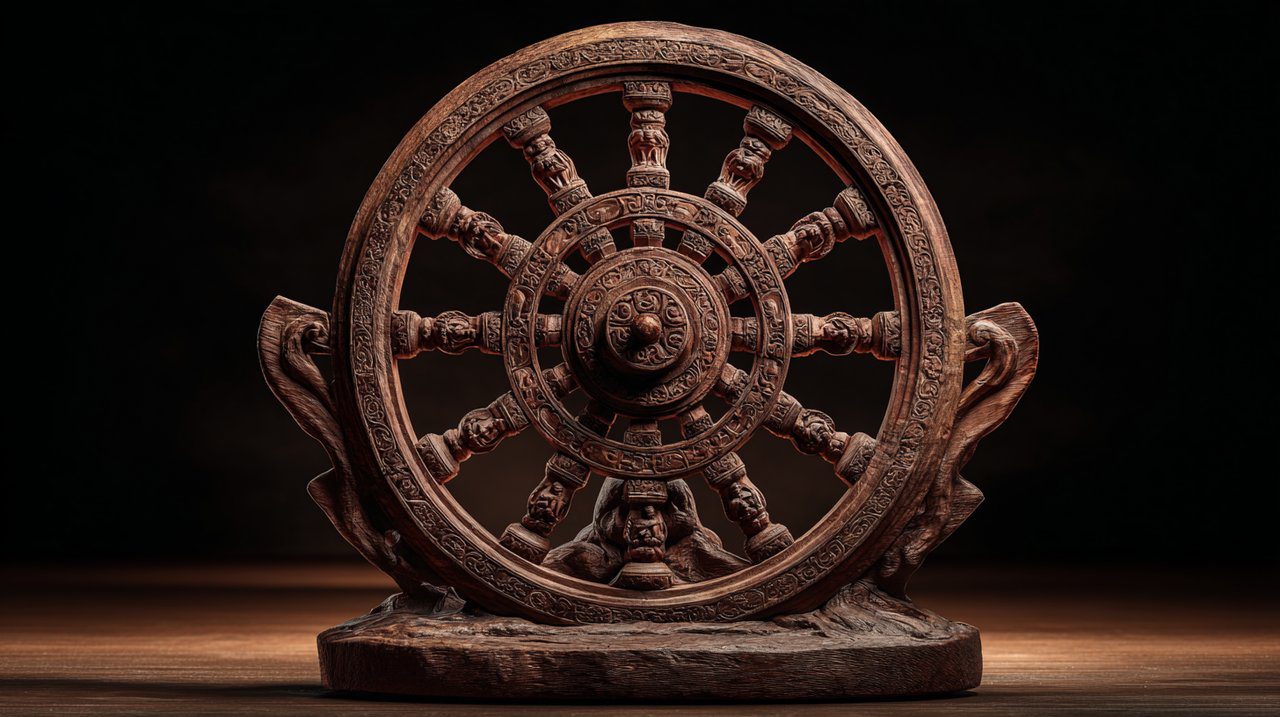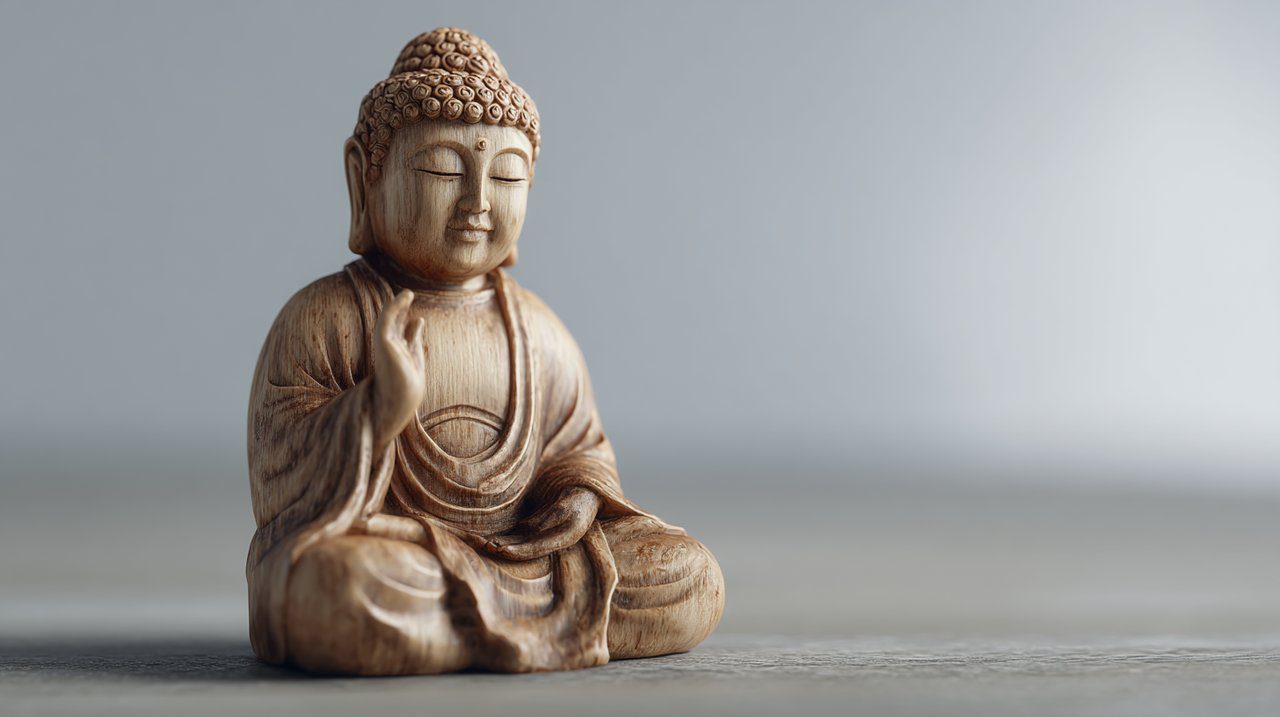The River’s Flow: Buddhist Rebirth, Karma, and the Stillness of Nirvana
The evening light, soft and diffused, often finds me by the quiet stream. I watch the water, ceaselessly moving, yet always present. It carries fallen leaves, ancient pebbles, and fleeting reflections, never quite the same, yet always itself.
This silent dance of continuity and change, I’ve found, mirrors the profound insights of certain ancient wisdom traditions on what lies beyond a single life. For the Buddha, the concept of ‘life after death’ is not about a soul’s journey to a fixed realm, but a dynamic process of becoming, shaped by every ripple of our existence.

The Stream’s Whisper: Redefining Life Beyond
In many familiar understandings, the afterlife often conjures images of an eternal soul journeying to a heaven or hell. However, the Buddha offered a different lens, one focused on rebirth rather than a permanent, unchanging soul.
It’s less about a ‘destination’ and more about a continuous ‘process.’ This perspective emphasizes a stream of consciousness, or a life-force, that flows from one existence to the next.
Like the stream that constantly renews its waters, life continues. It is not as the identical drop, but as a continuation of its essence. This offers a profound shift from the idea of a fixed entity to an ever-evolving current.
Samsara’s Dance: The Endless Cycle of Being
The Buddhist concept of Samsara describes this continuous cycle of birth, life, death, and rebirth. It is not a place, but the very nature of our conditioned existence, marked by impermanence and dissatisfaction.

A Continuous Flow
Imagine the seasons turning, each giving way to the next in an unbroken sequence. Spring becomes summer, summer fades to autumn, and autumn yields to winter, only for spring to return. This natural rhythm reflects Samsara’s ongoing dance.
Driven by Craving
This cycle is primarily fueled by our attachments, desires, and aversions – the ‘thirst’ or ‘craving’ (tanha) that keeps the wheel turning. When we cling to experiences, identities, or outcomes, we create the conditions for future becoming.
This journey through Samsara is not necessarily punitive, but rather a natural consequence of our actions and intentions, keeping us bound to the cycle of suffering.
Karma’s Echo: The Shaping Force of Action
Within the flow of Samsara, Karma acts as the guiding current. It’s often misunderstood as fate or divine retribution. Yet, in Buddhist thought, Karma is simply the principle that every action, thought, and word has consequences that will eventually return to us.
Karma is not just about ‘good’ or ‘bad’ deeds, but the intention behind them.
The Pebble in the Pond
Consider dropping a pebble into a still pond. The ripples spread outwards, affecting the entire surface, and eventually, they return to the point of origin. Our actions are like these pebbles, creating ripples that shape our present and future experiences, both within this life and in subsequent rebirths.
Shaping Future Existence
Positive, skillful actions (rooted in generosity, compassion, and wisdom) lead to favorable rebirths and experiences. Negative, unskillful actions (rooted in greed, hatred, and delusion) lead to less favorable ones.
This continuous feedback loop reinforces the idea that we are the architects of our own journey through Samsara.
Nirvana’s Stillness: Beyond the Cycles
If Samsara is the endless dance, then Nirvana represents the profound stillness that lies beyond it. It is not a heaven or a physical place one travels to after death, but rather a state of liberation.
It signifies the cessation of suffering, craving, and the cycle of rebirth, accessible in this very life.
The Deep Lake’s Calm
Imagine a deep mountain lake, undisturbed by wind or current, its surface perfectly still, reflecting the sky with absolute clarity. This deep, unshakeable calm, free from the agitation of desire and attachment, is a metaphor for Nirvana.
Extinguishing the Flame
The word “Nirvana” itself means “to extinguish” or “to blow out.” This is not the extinguishing of life, but the extinguishing of the fires of greed, hatred, and delusion. It is the realization of ultimate peace and freedom.
This state offers a profound release from the limitations of conditioned existence, offering an end to the ceaseless turning of the wheel of Samsara.

Impermanence’s Wisdom: Living in the Present Flow
The understanding of rebirth, Karma, and Nirvana brings us back to the stream’s edge, to the reality of impermanence. Every moment, like every drop of water, is unique and fleeting.
The leaves fall, the seasons change, and nothing remains fixed. This wisdom encourages us to cultivate awareness in the present moment.
By observing the natural cycles around us – the growth and decay of plants, the ebb and flow of tides – we can learn to embrace the transient nature of all things. It’s an invitation to let go of what no longer serves us, much like a fallen leaf surrenders to the current, and to find peace in the ever-changing flow of life.
Just as the stream never truly ends but transforms, our journey is one of continuous becoming. To truly grasp these teachings is to look inward, to observe the currents of our own minds, and to find the stillness within the movement. Perhaps, by simply sitting by the water, we begin to understand.
💡 よくある質問
The Buddhist concept of rebirth is not about a soul's journey to a fixed heaven or hell, but a dynamic process of becoming. It emphasizes a continuous stream of consciousness or life-force that flows from one existence to the next, like a river that constantly renews its waters.
Karma acts as the guiding current within Samsara. It's the principle that every action, thought, and word has consequences that shape our present and future experiences, leading to favorable or unfavorable rebirths based on the intention behind them.
Nirvana signifies a state of liberation, the cessation of suffering, craving, and the cycle of rebirth. It is not a physical place but an inner state of profound stillness and freedom, achieved by extinguishing the fires of greed, hatred, and delusion.
Understanding impermanence, like the fleeting nature of a stream, encourages cultivating awareness in the present. It teaches us to embrace the transient nature of all things, let go of what no longer serves us, and find peace in the ever-changing flow of life.







